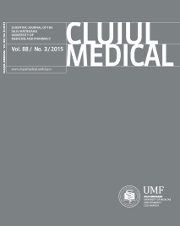In vivo orthodontic retainer survival - a review
DOI:
https://doi.org/10.15386/cjmed-451Keywords:
fixed retainer, orthodonticAbstract
Abstract
Background. Relapse following orthodontic treatment is a constant concern of orthodontists. Fixed retention is preferred especially for the lower arch by most orthodontists.
Objectives:. This review focuses on in vivo studies. The main objective is to determine the survival rate of different types of retainer: glass-fiber reinforced composite resin, polyethylene or multistrand stainless steel wire bonded to each tooth from canine to canine in the mandibular arch. A second objective is to assess which of these types is less likely to cause additional problems and the third objective is to evaluate the factors that may influence retainer survival.
Results and conclusions. There were 8 studies identified that matched the objectives stated. Curent in vivo studies on survival rate take little notice of the role of the material used for bonding of the fixed retainer. It is not possible to draw a conclusion on reliability of new types of retainers glass fiber reinforced composite resin or polyethylene compared to multistrand stainless steel wire. The multistrand wire remains the gold standard for fixed retention.
Although it is a logical outcome that retainer survival is dependent on the application technique, there seems to be no research outcome proving that operator experience, moisture control are essential, nor does patient age or sex have statistically proven effects on survival rates.
Adequate studies that involve such aspects should be performed.
Downloads
Additional Files
Published
How to Cite
Issue
Section
License
The authors are required to transfer the copyright of the published paper to the journal. This is done by agreeing to sign the Copyright Assignment Form. Whenever the case, authors are also required to send permissions to reproduce material (such as illustrations) from the copyright holder.

The papers published in the journal are licensed under a Creative Commons Attribution-NonCommercial-NoDerivatives 4.0 International License.

